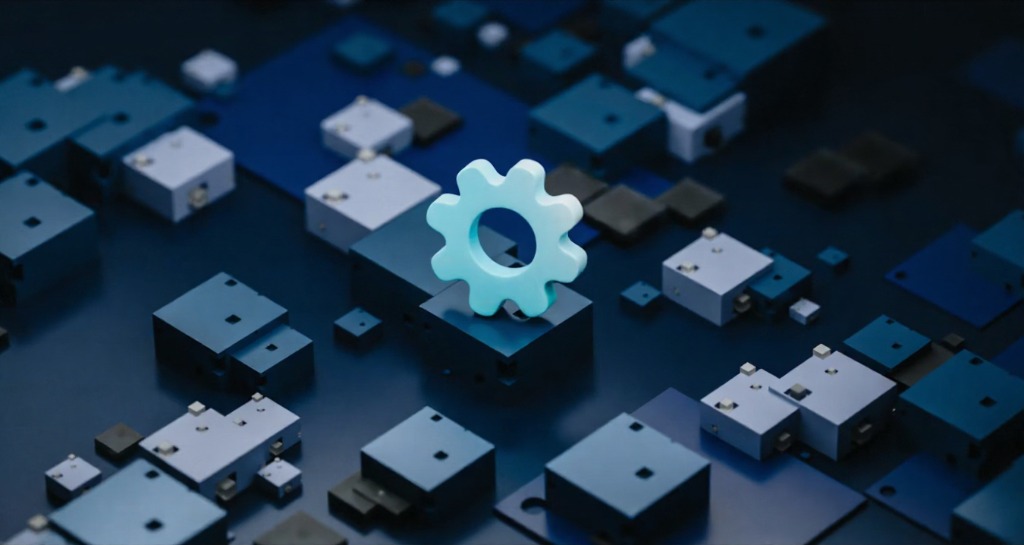What You’ll Discover:
- The real impact of agentic AI in manufacturing.
- Seven major ways it transforms production.
- How it streamlines micro-processes without halting operations.
- Practical steps for smarter, sustainable growth.
- How to integrate automation with minimal disruption.
How agentic AI manufacturing Is Transforming Modern Manufacturing
Agentic AI is entirely changing how factories operate. It adds intelligence, adaptability, and autonomy to daily production tasks. As a result, manufacturing becomes more precise, faster, and highly flexible. In contrast, traditional automation simply cannot match this level of responsiveness.
Unlike standard systems, Agentic AI agents act on their own. They share data with other systems, watch conditions in real time, and adapt right away when needed.
What’s more, you don’t need a massive technology overhaul. Agentic AI fits into existing processes easily. It works in the background and improves performance without shutting down operations. By adding AI to microprocesses, manufacturers get quick results and, more importantly, keep their teams from being too busy.
Now, let’s explore seven ways Agentic AI is reshaping manufacturing.
1. Real-Time Process Optimization
Traditional automation works on fixed rules, which rarely match real-world dynamics. Things keep evolving, materials change, humidity goes up and down, and people work differently each time.
However, agentic AI changes this game. Agentic AI manufacturing monitors operations continuously, measuring speed, quality, energy use, and machine performance. Whenever it finds an issue, it adjusts settings, redirects tasks, or updates processes immediately.
Consequently, waste drops, quality improves, and production speeds up. To give an instance, an electronics factory reduced faults by 18% after AI changed soldering heat to match humidity.
2. Seamless Integration of Micro-Processes
One key strength of Agentic AI is its ability to manage micro-processes effectively. Instead of replacing entire systems, it takes care of small but crucial tasks, such as
- Logging machine data automatically
- Running quick calibration checks
- Flagging early signs of wear
As a result, workers can focus on strategic work while AI handles repetitive routines. Even better, the integration is simple and smooth. As a result, there is no big downtime, no heavy retraining, and most importantly, no major system changes.
3. Enhanced Predictive Maintenance
Predictive maintenance helps avoid breakdowns, but most programs still use fixed times or old data. In contrast, Agentic AI checks machines in real time. It keeps an eye on things like movement, temperature, and pressure, and then it looks for patterns in the data to spot problems early.
4. Intelligent Quality Control
Quality control is important, but it often slows production. However, agentic AI solves this by using smart checks with sensors, computer vision, and learning models.
It quickly finds errors and also changes inspection rules or settings when patterns repeat. As a result, products meet standards without slowing the line, even when production is high.
5. Facilitating Collaborative Automation
Another important benefit is collaboration. Agentic AI makes human-machine teamwork effortless. For example, robots can now match a worker’s pace or adjust their tools instantly for different tasks.
In practice, carmakers use this capability to share tasks between humans and robots effectively. As a result, workers avoid repetitive or dangerous tasks, while robots handle heavy lifting. The outcome? Greater efficiency and improved safety.
6. Adaptive Supply Chain Management
Every production line depends on the supply chain. Whenever disruptions occur, even the best schedules collapse.
However, agentic AI fixes such issues by checking stock, supplier performance, and shipping delays in real time. When anything changes, it quickly updates orders, finds other vendors, or redirects shipments right away. So, early adopters didn’t have to deal with downtime when there were problems with global supplies because AI made sure they had supplies before anyone else.
7. Continuous Process Innovation
Standing still in manufacturing is risky. That’s why agentic AI manufacturing helps companies keep improving without stopping work.
It learns from every production cycle and then sends insights back into the system. As a result, manufacturers can try new designs or materials while current processes run smoothly.
For example, a textile company tested a new fiber blend while the old process kept running, and AI made sure the quality was right before launch.
Making the Transition Effortless
The beauty of agentic AI in manufacturing lies in its compatibility with existing systems. Instead of demanding major changes, it works quietly in the background. It automates small but critical tasks and offers smart suggestions to teams.
This makes adoption smooth, fast, and low-risk. Furthermore, small wins like fewer mistakes, more uptime, and less waste boost team morale without causing problems.
What’s Next for Agentic AI in Manufacturing?
The future of agentic AI goes beyond process control. Soon, these systems will factor in market trends, compliance requirements, and sustainability goals. They will make decisions that align production with business strategy.
Imagine AI agents managing multiple plants simultaneously, sharing real-time insights across sites. As a result, early adopters will:
- Innovate faster with minimal risk
- Respond better to supply chain disruptions
- Maintain high efficiency in any market
Ready for a Smart Transformation?
ProcesIQ can help your business automate micro-processes without disrupting daily operations. Start today with Agentic AI for manufacturing and unlock seamless, intelligent automation.
Contact ProcesIQ now to bring next-generation efficiency to your company.

Leave a Reply